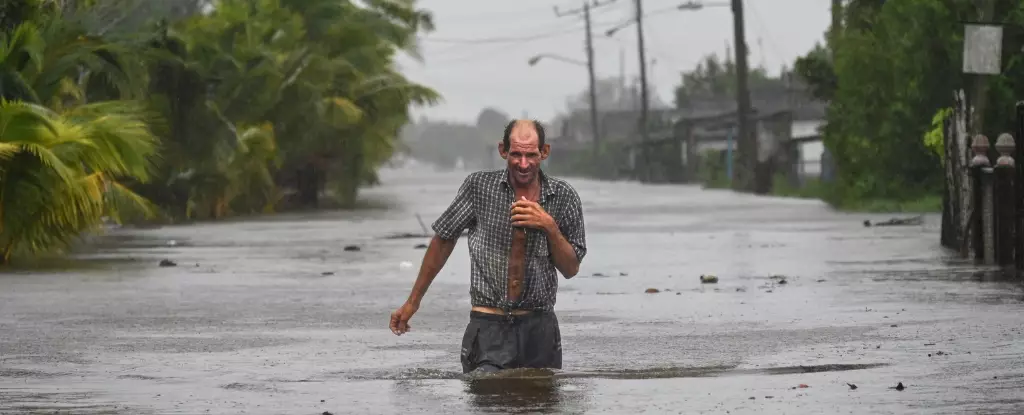Natural disasters, particularly tropical cyclones, often dominate headlines for their immediate horrors, but a profound and haunting reality lies beneath the surface. Recent research has revealed that the long-term death toll from such storms may be exponentially higher than what immediate figures suggest. As extreme weather patterns become increasingly common due to climate change, it becomes essential to scrutinize both the visible and invisible impacts of these storms on human life.
When hurricanes or typhoons strike, the immediate death count may serve as a stark indicator of devastation, but this narrow view neglects the broader implications of such disasters. An alarming new study estimates that the long-term death toll from tropical cyclones may reach a staggering 300 times greater than initial reports indicate. Taken from an analysis of 501 tropical cyclones that impacted the continental United States between 1930 and 2015, the findings suggest that while the average immediate fatalities reported during such storms hovered around 24, the subsequent excess deaths from all causes in the aftermath ranged between 7,000 and 11,000 per cyclone.
This staggering statistic prompts critical questions about how society records and understands the ramifications of these natural disasters. While we can quantify direct casualties, capturing the complexity of indirect deaths is far more challenging but equally essential. The study argues that these figures may account for as much as five million deaths over an 85-year span, signalling that cyclones might take more lives than fatalities caused by car accidents, infectious diseases, or even wars.
One of the critical issues highlighted by researchers is the persistent and unequal vulnerability among populations exposed to cyclones. Factors such as economic disruption, destruction of infrastructure, and environmental pollution contribute heavily to the long-term consequences of these storms. Following displacement and destruction, individuals are often left in precarious financial situations, which can affect their access to healthcare and other services. For instance, youth and working-age adults may deplete their savings for immediate repairs, ultimately undermining their long-term health sustainability.
The phenomenon is particularly stark within vulnerable communities, where socio-economic status plays a significant role. The study uncovered implications regarding early mortality risks for babies born in cyclone-affected areas, showing concerning health trends that persist long after the storm has begun to clear. Alarmingly, the research indicated that Black Americans in these affected regions face a disproportionate threat, estimating that 15.6 percent of Black deaths between 1930 and 2015 can be traced to the effects of cyclones, even when other factors are considered.
State-Specific Risks and Resilience
Interestingly, the study also unearthed state-specific data that reveals how different regions cope with storm aftermaths. For example, Florida, which experiences a higher frequency of hurricanes, shows greater resilience compared to states like North Carolina and South Carolina that experience fewer storms. The data indicates that 13 percent of deaths in Florida, 11 percent in North Carolina, and nine percent in South Carolina can be traced back to cyclone effects. However, areas new to experiencing cyclones, often unprepared for such events, could face devastating consequences in the future as climate change continues to modify traditional weather patterns.
Given the planetary changes, the urgency to readdress how society supports affected communities cannot be overstated. As researchers suggest, governmental and local agencies must expand their support systems. Many individuals become unaware that their long-term health has been compromised due to post-cyclone challenges.
Implications for Policy and Public Awareness
The implications of this research are profound, suggesting that policymakers must address not only the immediate aftermath of storms but also their long-lasting realities. This underscores the need for a holistic approach to disaster preparedness that considers both direct and indirect effects on human health. Responsibly addressing these challenges demands the collaboration of governmental bodies, healthcare providers, and community organizations working in tandem to establish robust support infrastructures.
Furthermore, this examination highlights the critical importance of public awareness. Elevating knowledge around the lasting effects of tropical cyclones can empower at-risk communities and encourage proactive measures to safeguard health against post-disaster risks. As climate change continues to facilitate more severe weather events, understanding the full scope of cyclones’ impact is essential for safeguarding lives and fostering resilient communities.
The hidden toll of tropical cyclones extends far beyond their immediate destruction, weaving a tapestry of long-term public health crises that require robust responses and strategic intervention. By broadening the conversation surrounding natural disasters, society can begin to address both the grief of today and the risks of tomorrow.


Leave a Reply